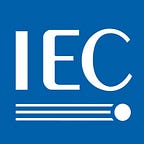Just how smart are smart buildings?
by Antoinette Price
What if the building you worked in knew who you were before you got through the door, could tell you your agenda for the day and adjusted the light and temperature to suit your needs wherever you were? What if it were powered by renewables, produced more energy than it used and on top of this, every aspect of it — materials, position and relation to the immediate surroundings — further increased its energy efficiency?
This building exists. It’s called The Edge, is located in Amsterdam, and has been given the highest sustainability score ever awarded by the British rating agency BREEAM.
Greening big polluters
Buildings are the largest energy consuming sector in the world and account for over one-third of total final energy consumption, according to the International Energy Agency (IEA). They also contribute a third of total greenhouse gases worldwide.
From global to local levels, policy makers and the construction industry are working to make buildings greener, in order to protect the environment and cater more effectively to the individual needs of building occupants.
It’s all down to technology
Morphing from standalone places we live and work in, to increasingly intelligent connected spaces, smart buildings are improving quality of life and enhancing the work and broader environments.
Diverse systems and devices connected to the Internet of Things (IoT) make it possible to monitor access, energy consumption, moisture levels, temperature and building occupancy in real-time, to cut costs by better managing security, heating, cooling and lighting in offices and homes.
The increasing amount of technology being incorporated into residential buildings will enable aging populations who will be likely to need greater assistance on a daily basis, and disabled people live longer in their homes. For example, systems which use voice recognition to turn devices and systems on and off, or building access using biometrics, such as a simple fingerprint, make it easier for people with physical disabilities to carry out daily activities.
The key contribution of IEC International Standards
IEC works together with ISO to produce International Standards for information and communication technologies (ICT) for business and consumer applications.
Interoperability
IEC and ISO are developing International Standards which will cover IoT architecture, vocabulary and interoperability. These will allow the various building systems and devices to function rapidly and reliably, as they gather, exchange and analyse vast amounts of data in real time.
Catering to the many needs of building occupants
IEC work also deals with active assisted living (AAL), for people who require different levels of assistance to carry out daily tasks. The IEC Systems Committee for AAL, takes a holistic approach and addresses concepts, products, services and systems, which combine technologies and social environment, to improve the lives of AAL users. For example, connected wearable monitors, which track movement and send alerts to carers if the user falls over and needs help.
IEC also develops Standards for accessibility and user interfaces related to audio, video and multimedia systems and equipment designed to improve access to multimedia content for people with visual and hearing loss. Visually impaired people are able to use and operate TV equipment, such as remote controls in order to navigate channels, and carry out the initial TV setup more easily, thanks to a Standard for a text-to-speech function.
In the case of hearing loss, IEC has developed Standards which cover performance characteristics of different types of hearing aids, including improving the sound quality in rooms where echoes and background noise can compromise acoustics.
Cyber security
Our connected world can be very convenient and offers many advantages. Smart technology is making offices more efficient and green and enabling aging populations and disabled people to live in their homes longer.
On the other hand, anything connected must be kept safe and secure from cyber breaches. In other words, ensure personal data is kept private.
IEC and ISO ICT Standards help tackle cyber security issues. They cover many aspects, including IT security techniques, cloud computing and distributed platforms, data management and interchange and IoT and related technologies.
